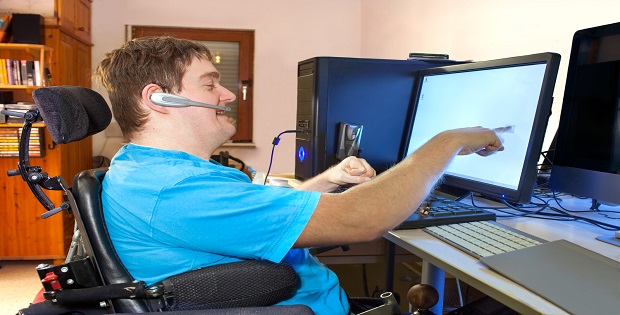Discover The Top 5 Risk Factors for Cerebral Palsy

Risk Factors for Cerebral Palsy
According to Cerebral Palsy.org, Cerebral Palsy risk factors are events, circumstances, or substances that increase the risk of developing Cerebral Palsy. However, the presence of one or more risk factors does not mean a child will automatically develop Cerebral Palsy; it means chances are higher than if that risk factor was not present. On the other hand, if there are no risk factors, this does not mean that a child will not develop Cerebral Palsy. Risk factors merely identify possible cause for concern.
The CDC has Identified Key Risk Factors for Cerebral Palsy, as it relates to Low Birthweight and Premature Birth
- A research that was completed in metropolitan Atlanta found that the prevalence of CP was 6.2 per 1,000 livebirths among children born weighing 1,500 to 2,499 grams (3⅓ to 5½ pounds) and 59.5 per 1,000 livebirths among children born weighing less than 1,500 grams, compared with 1.1 per 1,000 for children born weighing 2,500 grams or more. [Read article]
- A research completed in Denmark found that children born after in vitro fertilization (assisted conception) were 1.6 times as likely to have CP, due to the fact that they were more likely to be born prematurely or from a multiple pregnancy. [Read article]
- A study in Scotland found that children born as part of a multiple birth pregnancy such as being a twin were found to be almost five times more likely to have CP than children born as singletons. Part, but not all, of this increased risk is due to the fact that multiple birth children are more likely to be born prematurely or at low birthweight. [Read summary]
Further the CDC has Identified Disruption of Blood and Oxygen Supply to the Developing Brain, as Cerebral Palsy Risk Factors
- Disruption of the oxygen supply during birth (birth hypoxia) has been estimated to account for less than 10% of CP cases. [Read summary]
- Ischemic stroke, when a blood clot blocks a blood vessel in the brain, is recognized to cause brain damage that can result in CP. It can occur in the developing fetal brain during pregnancy or shortly after birth. [Read summary]
In addition, the CDC has Identified Infection Among Mothers, as a Cerebral Palsy Risk Factor
- Maternal genitourinary infection has been associated with an increased risk of CP among children born prematurely or at low birthweight. [Read article]
- Infection of the placental membranes (chorioamnionitis) or other signs of infection (blood infection in the mother or fever during labor) have been associated with an increased risk of CP for children born full-term. [Read article], [Read summary]
- Chorioamnionitis has been found to account for 12% of spastic CP among children born full-term and 28% of CP among children born prematurely. [Read article]
Other Factors as noted by Cerebral Palsy.org are:
- Emergency cesarean sections (C-sections)
- Premature separation of the placenta from the mother’s uterus
- Abnormal presentation or breech birth in which the baby enters the birth canal in a manner other than head first
- Prolonged second stage of delivery (from the point when the cervix is dilated to 10 cm through delivery)
- Premature rupture of the membranes in which the amniotic sac ruptures prior to labor
As noted by the CDC related to Economic Costs
- Among children enrolled in Medicaid in 2005, medical costs were higher for children with cerebral palsy. Costs were highest for children with both cerebral palsy and intellectual disability. [Read summary]
- Medical costs for children with cerebral palsy alone were 10 times higher than for children without cerebral palsy or intellectual disability ($16,721 vs. $1,674 in 2005 dollars).
- Medical costs for children with both cerebral palsy and intellectual disability were 26 times higher than for children without cerebral palsy or intellectual disability ($43,338 vs. $1,674 in 2005 dollars).
In closing, remember to share this post on social media and read more related articles.
Sources:
CDC: http://www.cdc.gov/ncbddd/cp/data.html
Cerebral palsy.org: http://www.cerebralpalsy.org/about-cerebral-palsy/risk-factors
Journal of the American Medical Association: http://jama.jamanetwork.com/article.aspx?articleid=193084
NCBI: http://www.ncbi.nlm.nih.gov/pubmed/10590904
Online Library.Wiley.com: http://onlinelibrary.wiley.com/doi/10.1111/j.1469-8749.2005.tb01208.x/abstract?systemMessage=Wiley+Online+Library+will+be+disrupted+2+July+from+10-12+BST+for+monthly+maintenance
Pediatrics.aap publications.org: http://pediatrics.aappublications.org/content/118/2/475?variant=long&sso=1&sso_redirect_count=1&nfstatus=401&nftoken=00000000-0000-0000-0000-000000000000&nfstatusdescription=ERROR%3a+No+local+token










